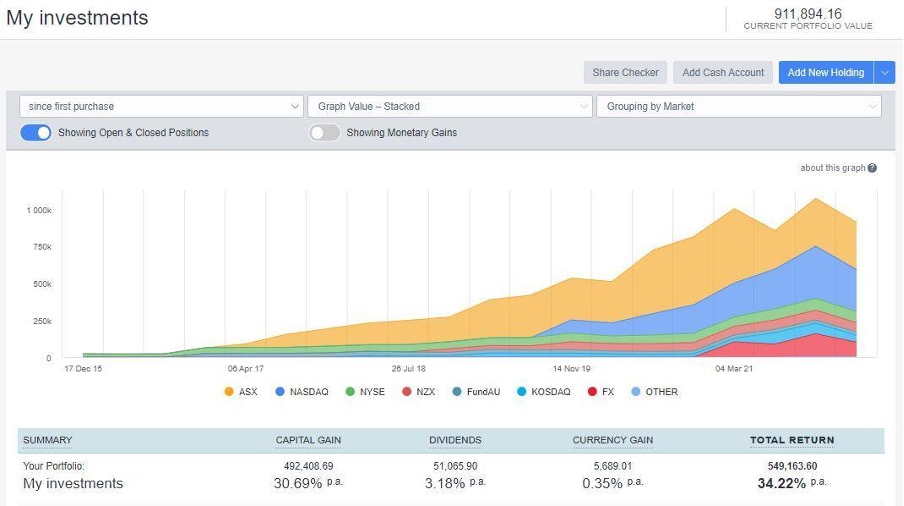Here’s how to handle mergers and acquisitions in your portfolio

Sharesight’s merge feature allows you to keep accurate performance and tax records. Pic via Getty Images.
Keeping track of your portfolio when the companies you’re into start buying each other or merging together can be a very tricky business – but there is help available with the right tools.
Brokers don’t usually inform you about mergers and acquisitions in your portfolio, which can make things a bit tricky when you’re trying to closely follow the news, paper trails and AGMs to keep an eye on things.
You tend to lose performance figures for your previous stock and your holdings automatically change in your brokerage account to reflect the new merger/acquisition, with no reference to the past.
Make an informed decision
For example, if you held Afterpay shares with a return of 190% prior to the merger with Block Inc (ASX:SQ2), once you were allocated your new ASX-listed CDIs, Afterpay would be removed from your portfolio, replaced by Block shares with a new return figure and cost base. This essentially wipes out that 190% return.
If you received a combination of shares and cash in the merger, it is also likely that this will not be reflected in your brokerage account.
Not only can this create problems when calculating your Capital Gains Tax (CGT), but it also misrepresents your performance as an investor.
Or maybe you held shares in Firefinch (ASX:FFX) prior to the spinoff of Leo Lithium (ASX:LLL) and secured 1 Leo Lithium share for every 1.4 Firefinch shares, or perhaps you had shares in Tabcorp Holdings (ASX:TAH) who demerged its Lotteries and Keno business into The Lottery Corporation (ASX:TLC).
Either way, you often wouldn’t have been notified of the merger ahead of time – making it too late to make an informed decision on whether to buy or sell the original stock.

Pic: Sharesight users can see their portfolio’s total return inclusive of capital gains, dividends and foreign currency fluctuations.
Easily track mergers in your portfolio
Most brokers’ performance metrics typically consist of daily price movements and capital gains measured from the stock’s purchase date.
Without the inclusion of key factors such as dividends, currency fluctuations and brokerage fees in your performance calculations, you won’t see the full picture of your portfolio’s performance.
Luckily, Sharesight has you covered with its online portfolio tracker which has an easy-to-use merge feature that allows you to keep accurate performance (and tax) records.
You can even elect to receive notifications about upcoming corporate actions for your stocks.
Retain data and track share performance
Investors can also view the latest news for holdings in their portfolio via the RSS feed function, which provides news coverage for stocks on the ASX, LSE, NYSE, NASDAQ and other key US markets.
And if you’ve received a combination of shares and residual cash in a merger, you can track their cash payment in Sharesight by clicking into the merged holding and adding a new dividend with details of the payment.
Once the merge has been completed, investors will retain performance data and records for the original stock, while also tracking the new merged stock with an updated cost base carrying across from the original stock.
That’s on top of staying across any records of residual cash received in the merger, allowing you to accurately calculate CGT on your investments – a definite win at tax time.
To track the performance of all your investments in one place, head over to www.sharesight.com/au/ to see how Sharesight’s portfolio tracker can work for you.

This article was developed in collaboration with Sharesight, a Stockhead advertiser at the time of publishing.
This article does not constitute financial product advice. You should consider obtaining independent advice before making any financial decisions.
Related Topics
UNLOCK INSIGHTS
Discover the untold stories of emerging ASX stocks.
Daily news and expert analysis, it's free to subscribe.
By proceeding, you confirm you understand that we handle personal information in accordance with our Privacy Policy.








